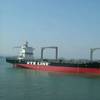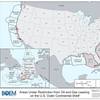Rolls-Royce Contract for Chinese Research Vessel
Rolls-Royce won a $32.2m order from Chinese conglomerate Sinopec to design and equip a specialist seismic research vessel. When operational it will carry out detailed surveys of the seabed to identify oil and gas reserves. The contract includes efficient power and propulsion systems and a range of advanced automated handling systems for seismic equipment.
Rolls-Royce has a growing presence in the subsea and seismic technology markets, and during the last three months, inclusive of this contract, the Group has secured seismic orders totalling more than $80.6m.
Cato Fjeldstad, Rolls-Royce, Sales Manager - Special Purpose Vessels, said:
“Rolls-Royce has decades of experience in designing specialist vessels to meet the needs of the oil and gas industry and continues to develop industry leading technology. Our expertise enables our customers to meet their objectives safely and efficiently, while operating in some of the most challenging environments on earth.”
The vessel, a UT 830 CD, will be able to operate worldwide and will be the first of its type to be equipped with a package of Rolls-Royce handling systems for seismic equipment.
During research missions, the vessel will tow up to 14 cables, or ‘streamers’, each 10 kilometres long. Seismic waves are sent deep into the seabed and the reflected waves are detected by hydrophones spread along the network of streamers. This data is then used to give a detailed 3D profile of the geological features, including the location of oil and gas, often thousands of metres below sea level.
Conducting seismic research requires a powerful and stable vessel, which provides extensive endurance, with enough stores and fuel for 70 days at sea. Seismic surveys involve criss-crossing large sections of the seabed, at low speed, often requiring several weeks of continuous operation.
Shanghai Shipyard Co will build the vessel for Shanghai Offshore Petroleum Geophysical Corporation (part of the Sinopec organisation), with delivery scheduled for 2013.
The UT 830 CD meets the DNV Clean Design and Comfort (V3)(C3) requirements, and the accommodation for 65 people in single and two berth cabins is to Rolls-Royce standard. We will be supplying all the main ship systems; power, propulsion, manoeuvring, deck machinery, controls and automation, and also the full seismic handling systems for streamers, vanes and sound sources, with their associated radio remote controls.
Seismic handling equipment is distributed over three levels – sound source systems lowest, the streamer winches and fairleads above, then the vane davits and winches on the upper deck. Seismic signals are processed in a spacious suite flanked by computer rooms, and the refined data sent by link for final analysis ashore.
This vessel will have a bollard pull of 130 tonnes, and being 100m long, with a 24m beam hull, it is designed for low motion, due to the sensitivities of seismic equipment.






